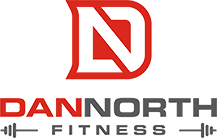I used to love watching Beyond Belief: Fact or Fiction.
If you’re unfamiliar with the show, think Twilight Zone. Only you had to guess whether the story was true or not at the end (hence the name).
Each episode was 30 minutes and was comprised of 2-3 different mini stories; some fact, some fiction. Sometimes, you’d get thrown for a loop and end up thinking there’s no possible way a story could be true, but it was! And vice versa.
Well, the internet (especially the fitness part of the internet) is kind of like Beyond Belief. It’s filled with stories and tales on how to gain incredible amounts strength, how to build dense muscle, how to lose fat and look good naked, and how to kill the boredom bird with your at-home workouts.
Some of these stories are true, and are, in fact…fact.
Some, on the other hand, would like you to believe they’re true, but end up being total bullshit.
Let’s debunk this myth train and get down to the facts so you don’t waste any more time with all the useless crap out there.
Fact or Fiction 1: You can’t get stronger with bodyweight workouts
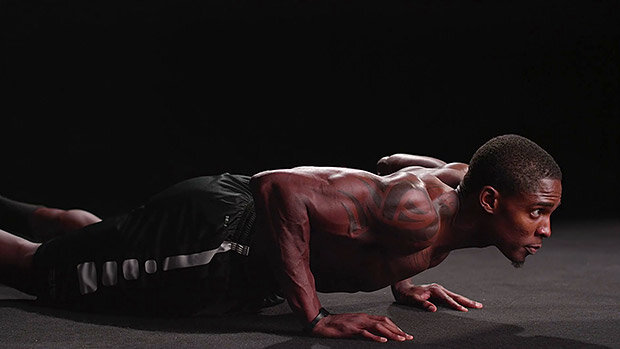
Yes, you can.
The thing about strength is it’s your body’s ability to overcome resistance by applying force. Usually, this resistance comes in the form of an external load, like a dumbbell or a barbell. But that does not mean that external loads like free weights are the only way to get stronger.
Your body is one giant piece of resistance!
Wait…back up for a sec. I wasn’t calling you giant…I just mean we’re able to offer resistance using our own bodyweight! Sorry…
Now that I’ve unintentionally called you one giant piece of resistance and you feel like smacking me upside the head, let’s get back to it.
When you’re performing bodyweight exercises, whether it’s pull-ups or push-ups, your muscles (and nervous system) are working hard to fight against the synergistic relationship between gravity and your own bodyweight.
So, what the hell does this mean?
Your muscles respond to force! If you’re able to apply force to your muscles, with or without the use of equipment, then you are going to get stronger, because you’re making your muscles adapt. Period.
Fact or Fiction 2: You will lose muscle if you don’t lift weights
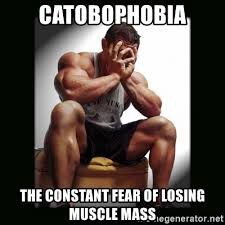
Let’s get one thing out of the way first…building muscle and retaining muscle are two different things.
If you’re looking to build muscle, then your goal is to increase muscle mass (i.e. make your muscles grow).
If you’re looking to retain muscle, then your goal is to maintain the amount of lean mass you currently have.
Both are possible with bodyweight workouts. The difference doesn’t so much apply to your workouts, as much as it does to your total calorie intake.
To build muscle and get bigger, you need to be eating in a calorie surplus. This means consuming more calories than you’re expending.
To maintain your muscle mass, you need to consume a maintenance level of calories. This means consuming the same amount of calories you’re expending.
Whichever direction you choose to go, whether you want to build muscle or retain the muscle you have, your number one goal should be to keep your protein intake high.
Fact or Fiction 3: High intensity interval training
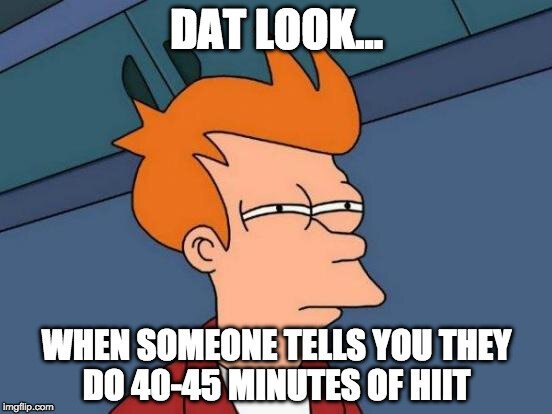
The word “HIIT” gets thrown around so loosely these days that people tend to be misinformed and misguided on what the hell it really is.
High intensity interval training (HIIT) is a form of training where you exercise at a high level of intensity for a short period of time.
HIIT is an effective way to increase the efficiency of your workout. But what makes it so efficient? By nature, you’re accomplishing more work in less time. Cool.
But, for something to be qualified as HIIT…there’s something you need to understand.
Something that gets lost in these “HIIT workouts” you see on Dr. Oz.
Something that dictates whether a workout is actually HIIT or not.
Here it is: You can only truly perform something at a high level of intensity for 10-12 seconds MAX!
Otherwise, it’s not high intensity. Sorry.
Not that that’s a bad thing, but understanding the difference between true high intensity and just a “regular” workout will help you decide which direction you want to take.
So, the next time you see a workout and it’s supposedly HIIT, and they tell you to do jumping jacks for 2 min…kindly walk away.
Fact or Fiction 4: Burpees and plyometric exercises are the best way to lose fat
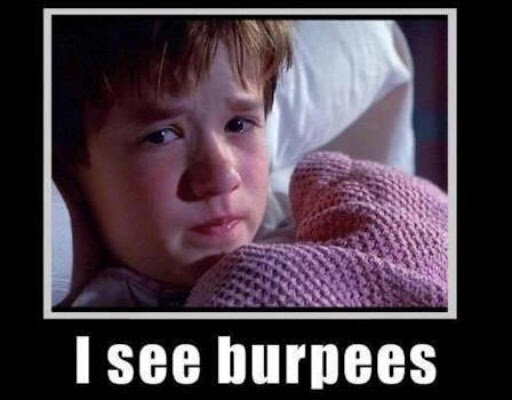
No. The best way (actually, the only way) to lose fat is to be a in calorie deficit. You need to consume less calories than you burn. Period.
Whether you burn calories from burpees or you burn them by doing push-ups until you puke, the only way you’re going to lose fat is if you’re expending more energy than you’re consuming.
Now hold on a minute…that doesn’t mean that all exercises (and all calories for that matter) are created equal. They’re not.
1000 calories of Mars bars and 1000 calories of vegetables have completely different implications on your health and performance.
In relation, the exercises you choose to perform have different corresponding effects as well.
The misconception that burpees and plyometric exercises are the best way to lost fat can probably be attributed to the fact that they are high-demanding movements that usually cause you to sweat profusely and elevate your heart rate until you feel like it’s going to jump out of your chest.
Ok, that’s fine, but these effects on your body don’t make them any more efficient for fat loss than other exercises. They’re just really good at increasing your core body temperature and elevating your heart rate.
So, with that being said, any exercise is a “good” exercise as long as it’s being performed with proper technique and gives you ongoing benefits from doing so.
In my personal opinion, strength training (whether it be with or without the use of equipment) has the best ROI when it comes to workout benefits. It doesn’t take a lot of time to finish an effective session (40-60 min) and gives you ongoing benefits that continue after your workout.
What do I mean?
Cardio, burpees, and some of you other favourite plyo exercises all have something in common…they burn fat while you workout.
Strength training, on the other hand, helps you burn fat after your workout and throughout the day. How? By becoming stronger and adding muscle to your body, you’re effectively raising your metabolic rate.
Higher metabolism = more calories burned = higher rate of fat loss.
Fact or Fiction 5: Sweating means you’re working hard and getting gains

Nonsense. We’ll keep this one short and sweet.
Sweating is not an indication of an effective workout. Whether you sweat or not has less to do with a workouts’ effectiveness and more to do with factors such as sodium levels, water retention, and body temperature.
There are people who sweat a lot who work really hard. There are people who barely sweat at all and work really hard.
Don’t overthink it.
Fact or Fiction 6: You need to do 100 crunches and sit-ups to get abs
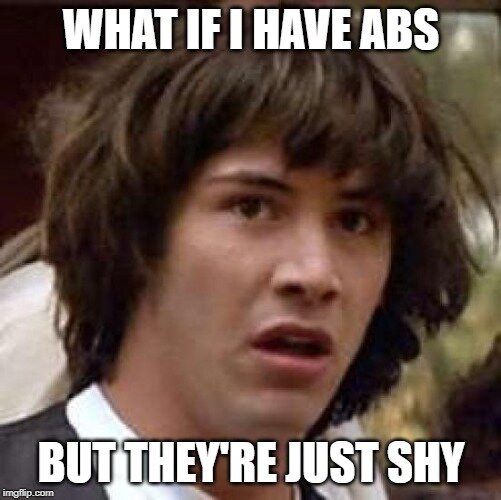
Nope.
You might do sit-ups because you think it’s a good way to train your core. Now, a lot of the fitness enthusiasts out there would like you to believe the opposite, that sit-ups and crunch-type exercises are horrible and should be thrown out completely.
I tend to be a little more lenient.
At the end of the day, sit-ups work spinal flexion…which is a function of the core.
The damage caused by performing sit-ups is overuse and coupling it with the fact that most people tend to be hunched forward over their computers all day.
So, sit-ups are fine…as long as you emphasize extension work and other exercises to train the other key functions of your core as well (rotation, stabilization, extension, and the sorts).




